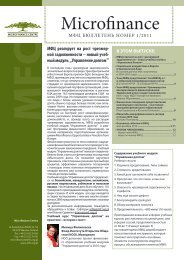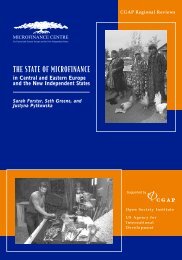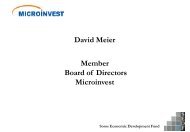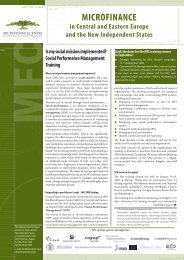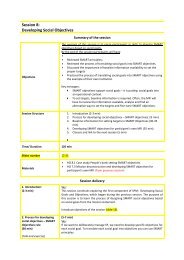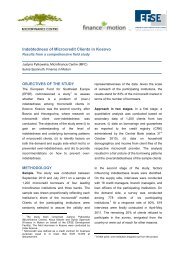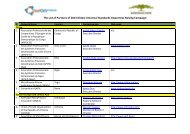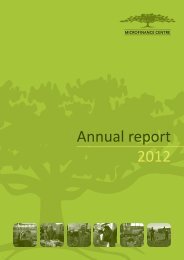Value Chains research report Tajikistan final - Microfinance Centre
Value Chains research report Tajikistan final - Microfinance Centre
Value Chains research report Tajikistan final - Microfinance Centre
You also want an ePaper? Increase the reach of your titles
YUMPU automatically turns print PDFs into web optimized ePapers that Google loves.
Table 48: SWOT Analysis of the Beef Production<br />
Strengths<br />
• Sufficient number<br />
of butchers and<br />
meat shops to<br />
meet consumer<br />
demand<br />
• Sausage<br />
processing has<br />
started to develop<br />
• Sufficient labor<br />
force<br />
Weaknesses<br />
• Low meat consumption per capita<br />
• Slaughtering and meat operations are conducted under<br />
poor sanitary conditions<br />
• Lack of specialized meat processing equipment<br />
• Inadequate veterinary inspection and services<br />
• Lack of motivation for veterinarians to react to problems<br />
in proper time<br />
• Significant price pressure due to imports from<br />
neighboring countries (Uzbekistan and Kyrgyzstan)<br />
• Lack of information on markets, supply and demand<br />
and consumption of meat and meat products<br />
• Poor marketing infrastructure<br />
• Farmers have a low level of knowledge on feeding<br />
cattle and herd management.<br />
• Weak infrastructure (including roads)<br />
• Low productivity of existing breeds<br />
• Low productivity of existing pastures and haymakers<br />
• Low level of management<br />
• Lack of genetic improvement.<br />
• No understanding traceability 22<br />
Opportunities<br />
• Restore the production and export of canned meats<br />
• Increase in meat production through the control of<br />
diseases and increased number of livestock<br />
• Improve and update the sanitary standards used in<br />
industry<br />
• Increase the number and effectiveness of training<br />
programs throughout the value chain<br />
• To improve quarantine stations and strengthen<br />
veterinary services<br />
• Import substitution activities for imported frozen meat<br />
• Improvement of quality control and regulatory agencies<br />
• Development slaughter-house according the sanitary<br />
and hygiene rules<br />
Threats<br />
• Lower demand<br />
due to declining<br />
economy and<br />
purchasing power<br />
of consumers<br />
• Dumping of meat<br />
products by<br />
neighboring<br />
countries<br />
• Natural disasters<br />
limiting feed<br />
supplies<br />
• Diseases<br />
Limiting factors to the growth of the livestock and meat industries are:<br />
• Lack of experience and skills in producing rapid weight gains;<br />
• Lack of knowledge of modern animal production methods;<br />
• Restricted feeding of animals during fattening;<br />
• Poor feed quality and expensive feeds;<br />
22 Traceability is established for an attribute when information about that particular attribute is systematically recorded from<br />
creation through to marketing. For example, for beef meat complete traceability would include the ability to identify the<br />
genetics (via DNA tracing), feed sources, animal husbandry techniques, method of slaughter, etc (Clemmens 2003).<br />
102




